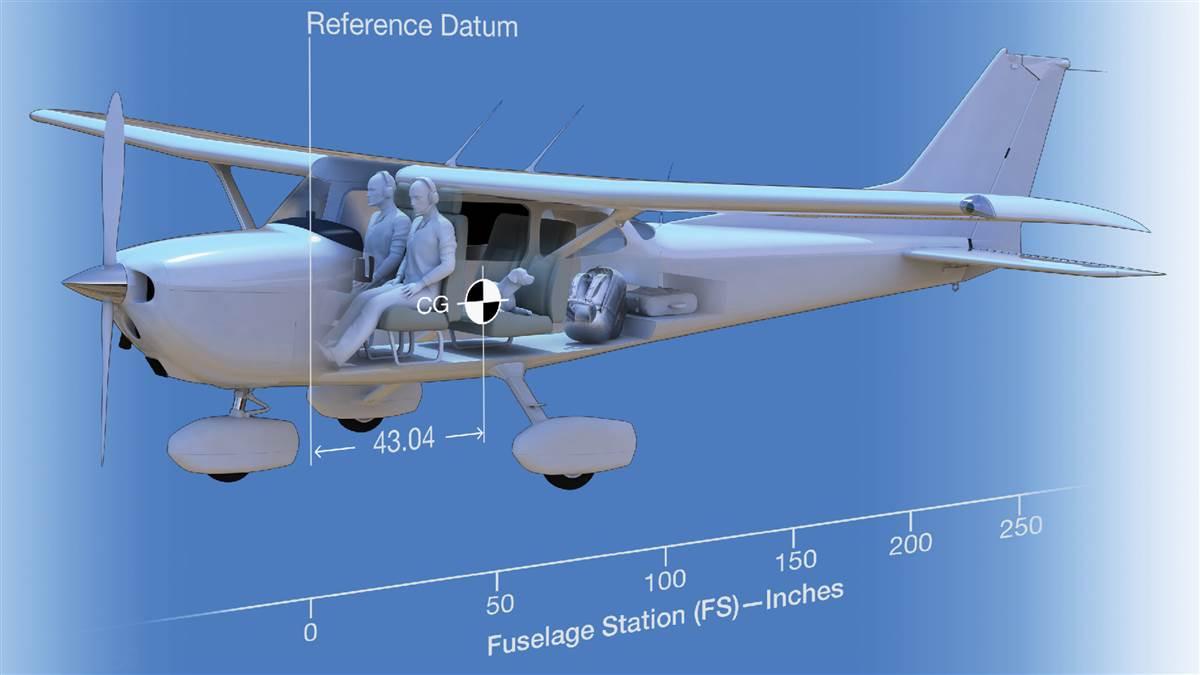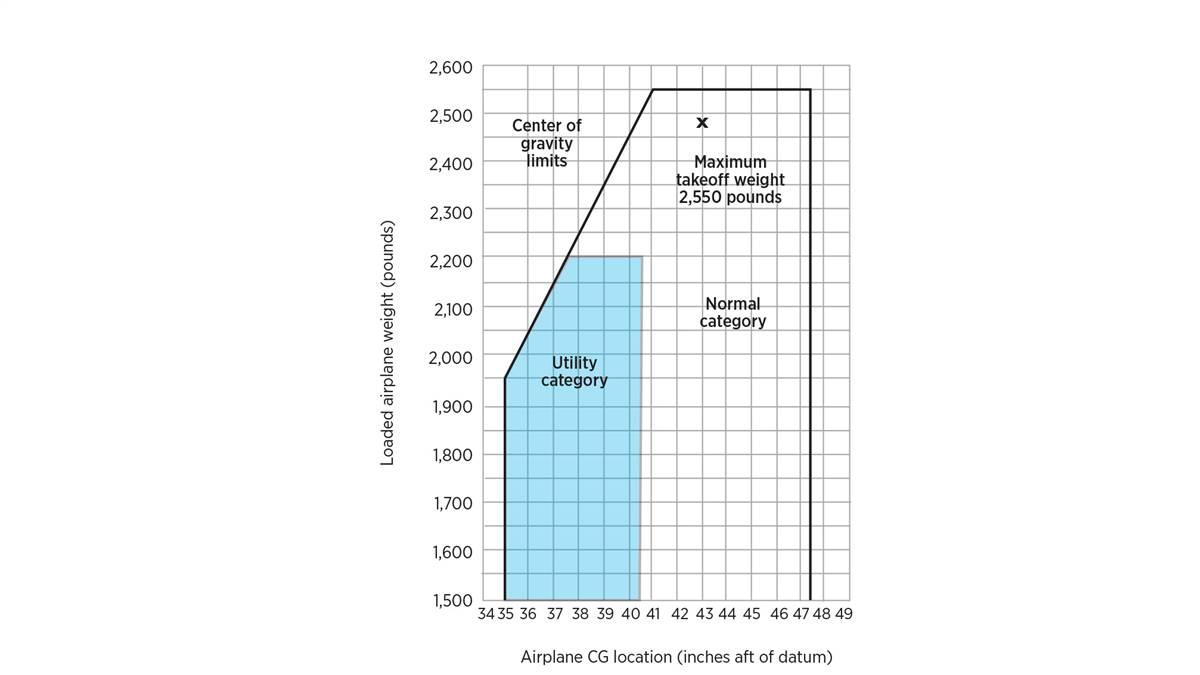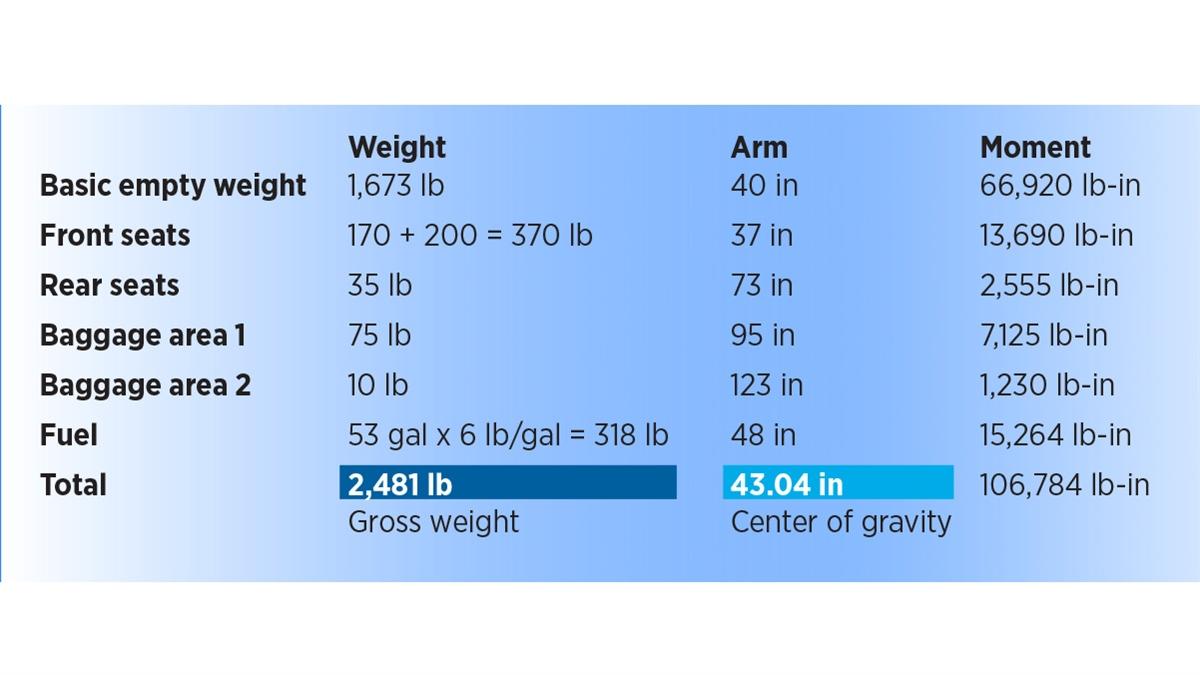Technique: Weight and balance
Run the numbers to stay in your airplane’s sweet spot

 Too much weight too far forward will make it difficult to raise the nose; too far aft, and it may be more difficult to recover from a stall. And, like a playground see-saw, a weight exerts more force the farther it is from the fulcrum—so baggage placed in the rear seat may be fine, for instance, when the same bag would cause the airplane to be out of balance in the rear baggage compartment. The center of gravity envelope (below) shows the range of weights and moments (weight times the arm, its distance from a pre-defined starting point) that are permissible for a given airplane. Calculating weight and balance is a skill that will pay dividends when you graduate from the training environment and start planning trips in the real world: friends, suitcases, and all.
Too much weight too far forward will make it difficult to raise the nose; too far aft, and it may be more difficult to recover from a stall. And, like a playground see-saw, a weight exerts more force the farther it is from the fulcrum—so baggage placed in the rear seat may be fine, for instance, when the same bag would cause the airplane to be out of balance in the rear baggage compartment. The center of gravity envelope (below) shows the range of weights and moments (weight times the arm, its distance from a pre-defined starting point) that are permissible for a given airplane. Calculating weight and balance is a skill that will pay dividends when you graduate from the training environment and start planning trips in the real world: friends, suitcases, and all.
- Ascertain from the pilot’s operating handbook the empty weight of the aircraft and determine the weights of people, baggage, and fuel.
- Multiply each weight by the arm—the distance from the reference datum—to find the moment.
- Add all the weights to find the gross weight. Add all the moments to find the total moment.
- Divide the total moment by the gross weight to find the center of gravity.
- Locate the total weight and center of gravity on the center of gravity limits chart in your aircraft’s POH to determine if the airplane is within allowable limits.
- Repeat this process for your expected landing weight, as the center of gravity can shift as fuel is consumed.
JARGON
Center of gravity. The mass center of an aircraft—the point where it would balance if you suspended it. This is usually expressed in inches from a reference datum.
Datum. A point from which moment arms are measured. Points forward of the datum have negative arms; points aft are positive. In this case, the datum is at the firewall.
Arm. The horizontal distance from the reference datum to an item’s center of gravity.
Moment. A force causing something to rotate, equal to an item’s weight times its arm.



